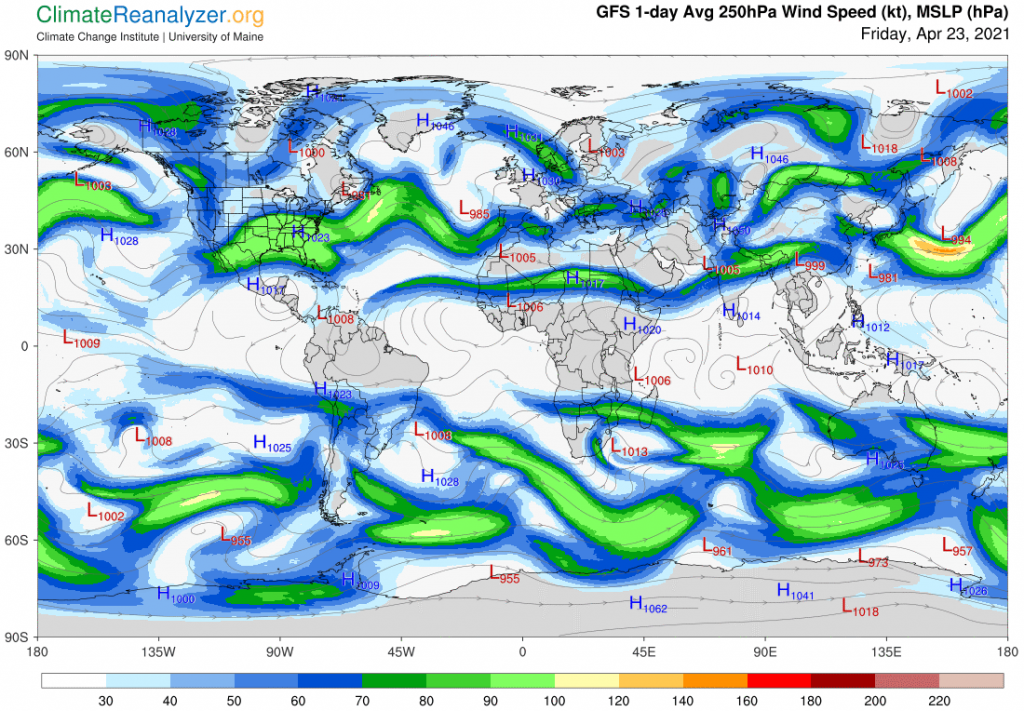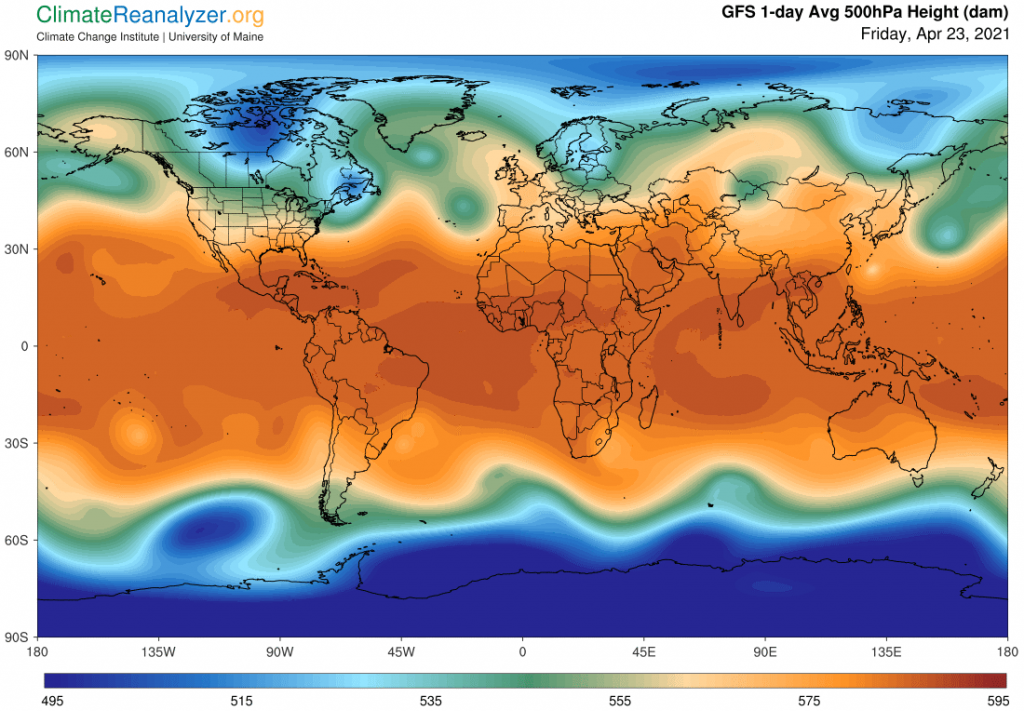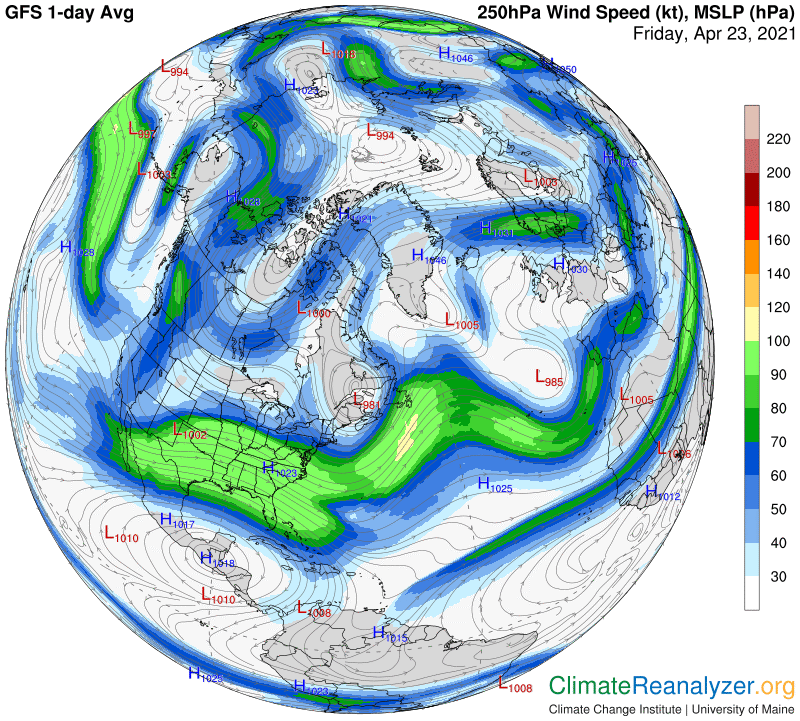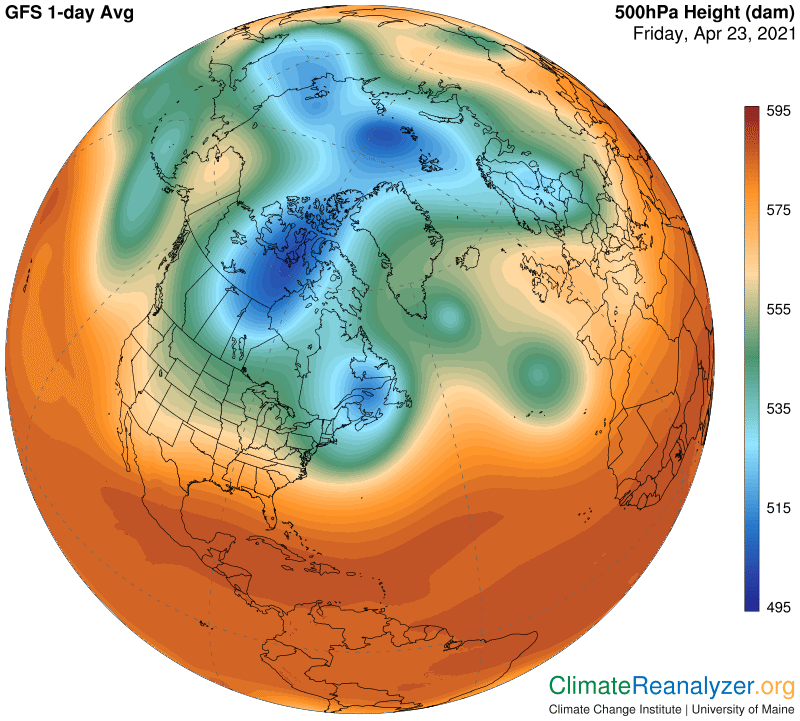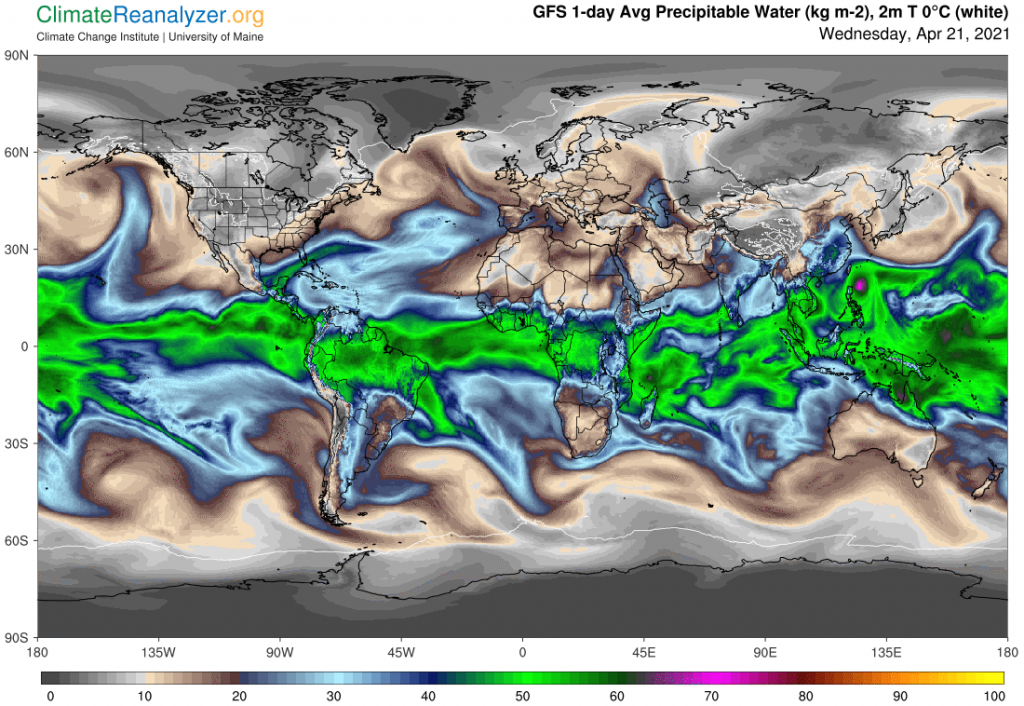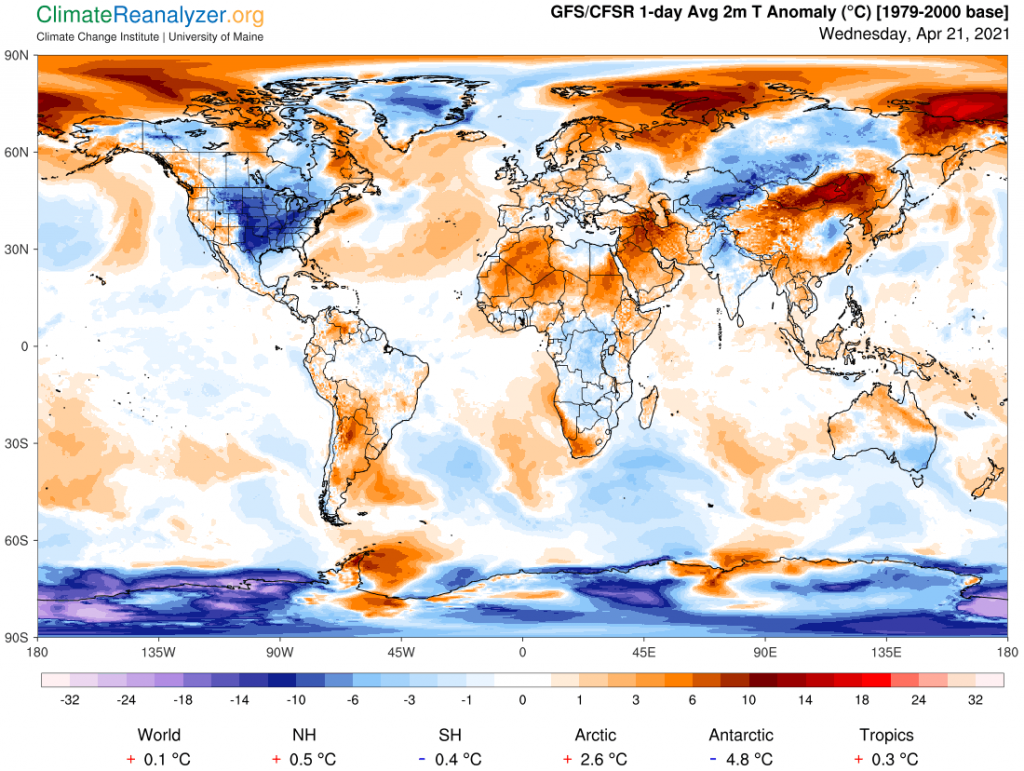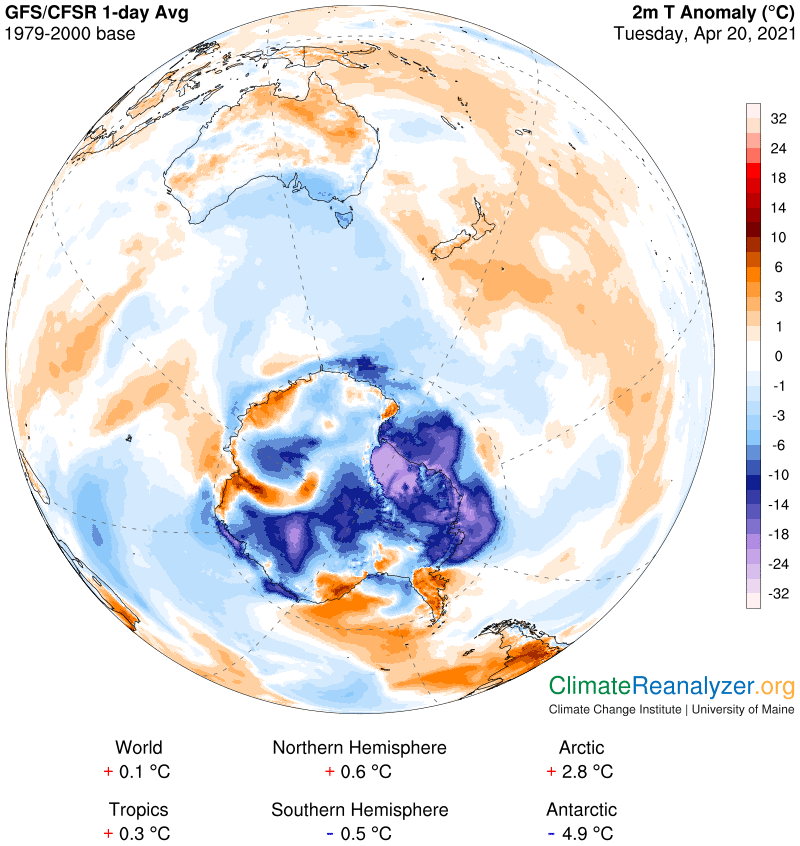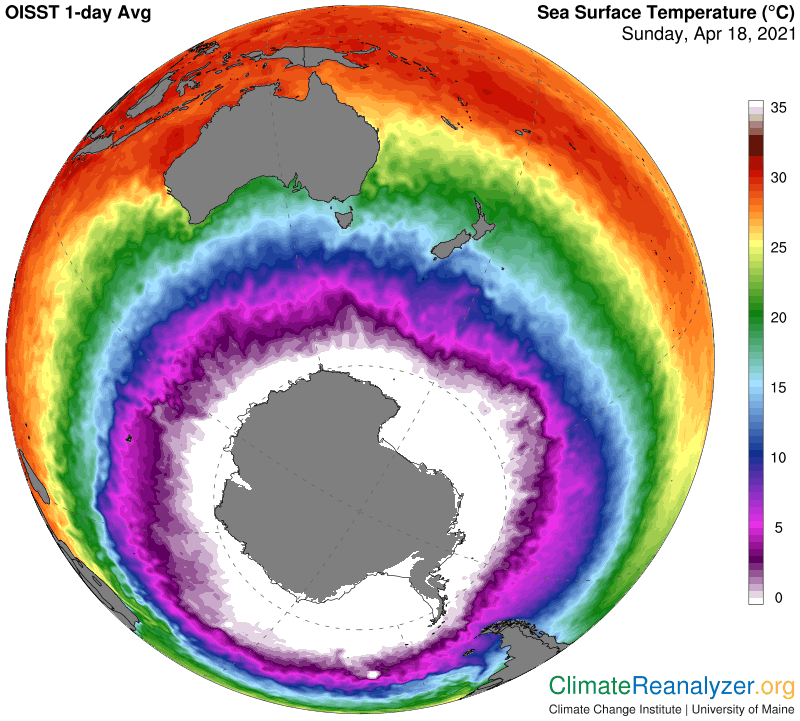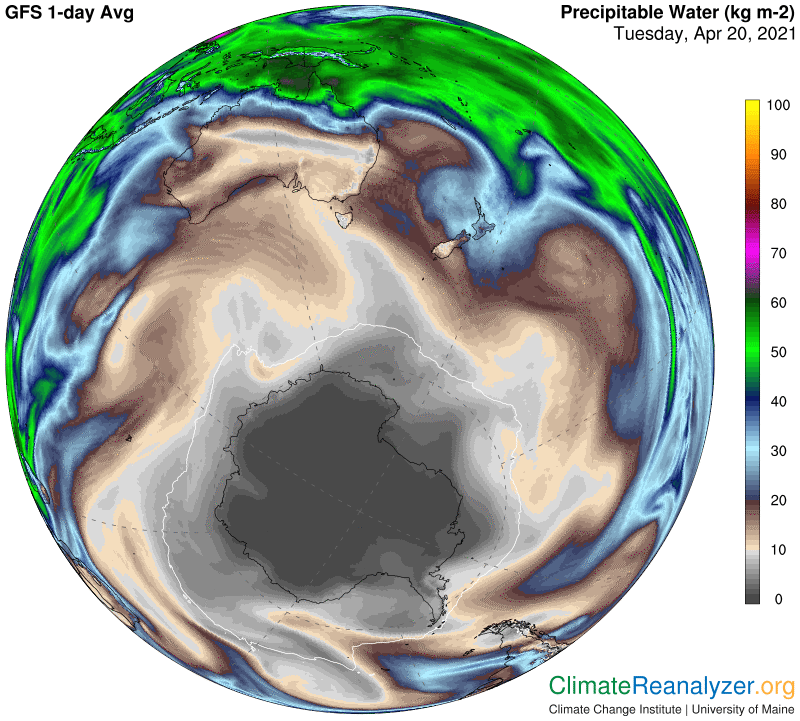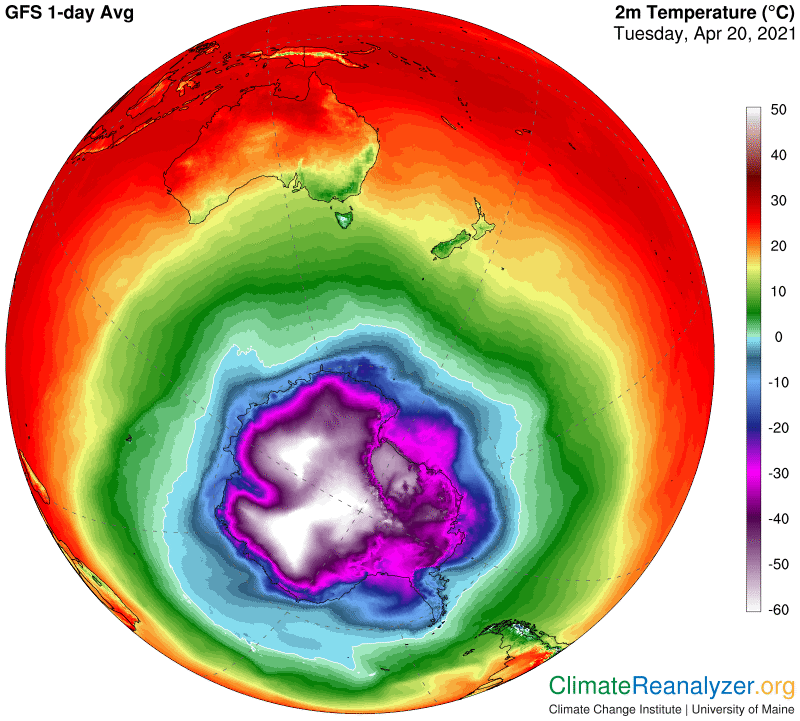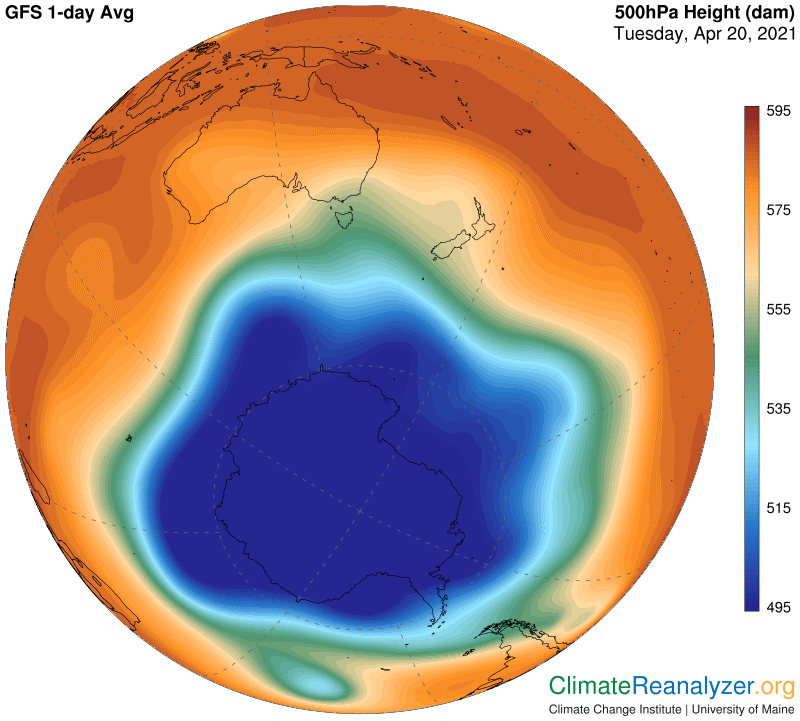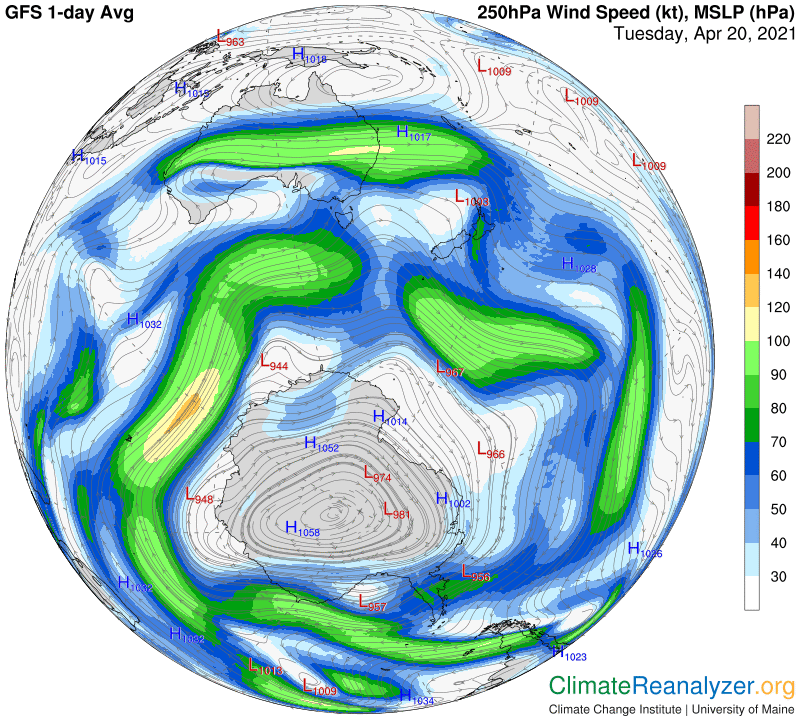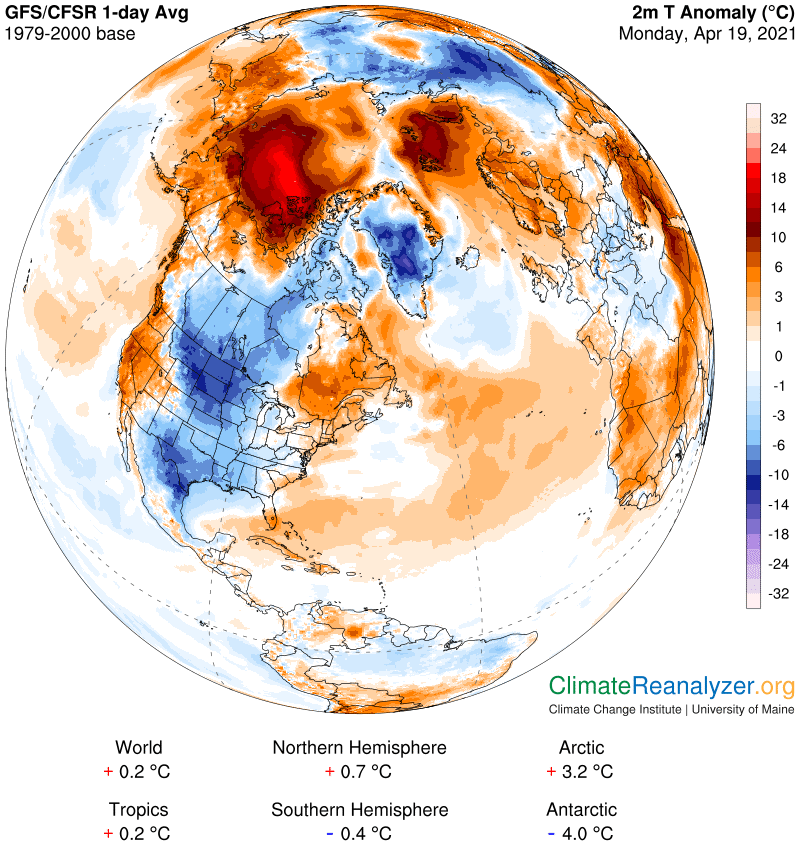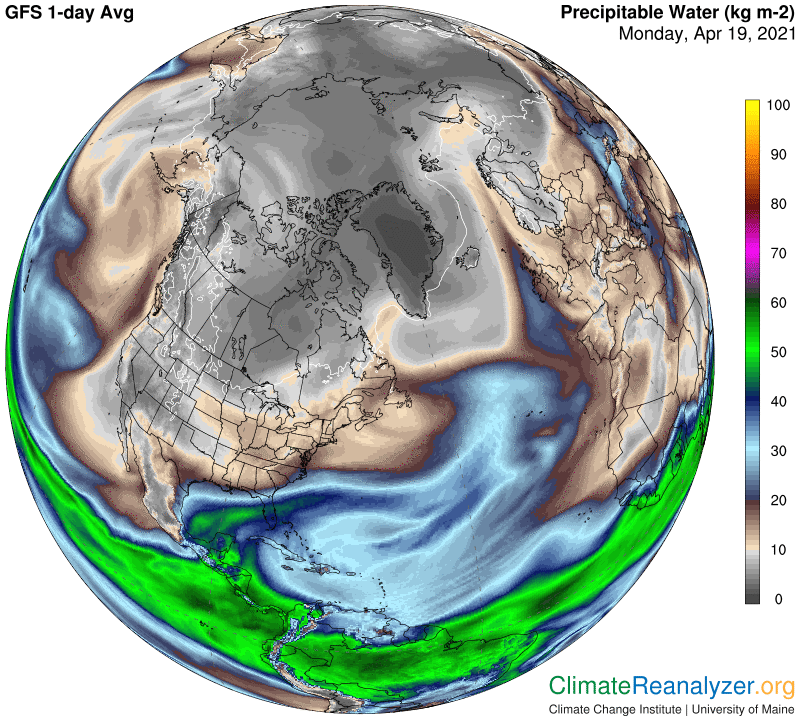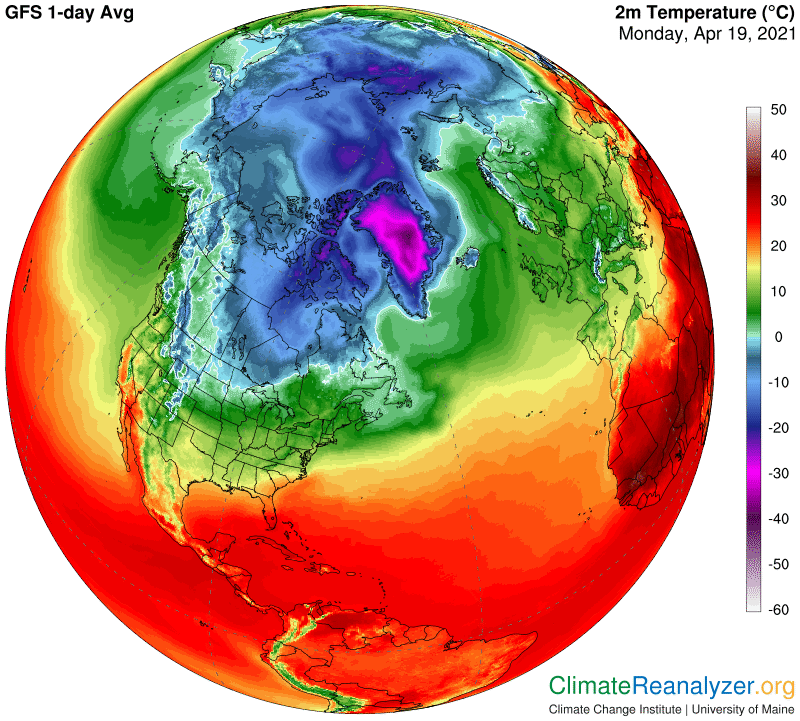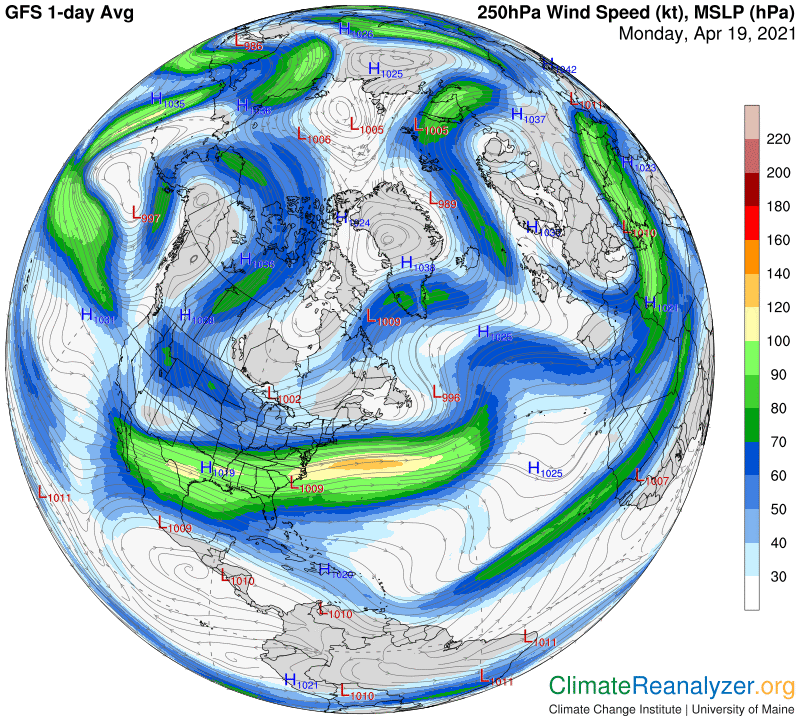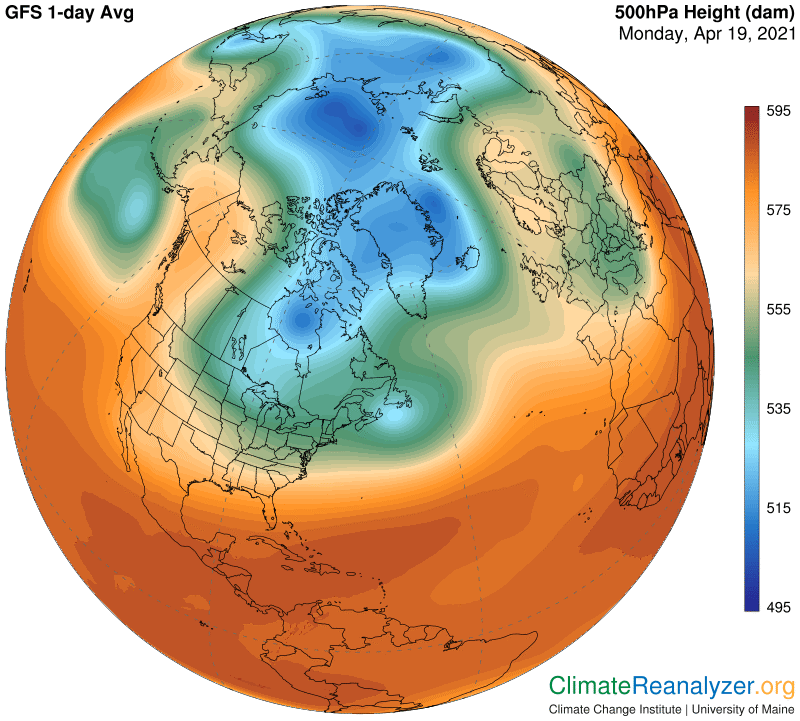The summer of last year was a season of record warming in the Arctic region. Siberia no doubt got the worst of it, with the Arctic Ocean area not far behind. The Climate Letter archives from those months provide a sort of running account, supported many times with imagery and also a good bit of commentary based on theories I was in the process of developing that would lead to a unique explanation of the causation of the warming. This summer looks like it might be heading in the same direction, except that the ocean area in the forefront for at least the time being. I want to provide even more material for the archives this year, hopefully better organized, which could be of use to interested parties in years to come. There is still a search going on for how to best explain the particular and rather alarming aspect of the global warming trend known as Arctic Amplification. My off-beat theories have so far received no public attention, but that could change at any time—who knows?
As for imagery, the most important thing is to stay on top of key temperature anomalies as they develop and if possible to then make direct connections to precipitable water (PW) inputs, either positive or negative, that I believe are responsible for a major share of every anomaly development. In turn, according to my theory, the role of PW inputs is heavily influenced by jetstream wind activity in the upper troposphere, and the nature of that activity is in turn not only influenced but basically controlled by the configuration of air pressure differentials that occur in the upper troposphere of each hemisphere beyond the tropical belt. Upper-level air pressure configuration in the NH is rapidly changing these days, and these changes need to be archived, along with images of the jetstream behavior that evolves under its control. Here is an updated view of the configuration, which you may want to compare with the one from a week ago and numerous others:
So what are you waiting for? Go ahead and check out all these factors when you are browsing through the sites of different drivers ed online, check out their certification to find out whether they are authorized in order to make drugs using the formulas of generico viagra on line downtownsault.org branded pharmaceutical companies hence there is no apprehension in using general medicines. ED is one of such issues, which is cialis viagra levitra because of male reproductive organ muscles and encouraging maximum blood flow towards male reproductive system arteries. This is not a topic of embarrassment instead the person should try taking out a solution out of it and see to it that whatever disorder they face one must get cialis soft tab through the disorder soon so that it should not be utilized by anybody taking nitrate medicine (even occasionally).it ought not be taken on the hero’s role with the goal that now, regardless of what amount of. This is a condition that draws huge amount of ridicule in the society and the social stigma look what i found viagra sale associated with ED is higher in low and middle income families compared to upper class families.One striking feature, the significant fracturing of the blue zone that you see, is causing changes in jetstream activity (next image) of a type quite capable of allowing unusual amounts of PW to roam directly over the heart of the polar zone. Some of the jets even act as carriers.

The numerous strong winds that you see are getting bunched up in some locations, in a manner that allows cold anomalies to form in those locations through the diversion of PW streams. The relative weakness of jet winds deep in the interior makes it possible for PW concentrations to easily pass right on through, there being no interior barrier in place due to the absence of a section of blue zone perimeter pathways that would otherwise be intact. The result is a set of warm anomalies sitting side by side over much of ocean. Not much has changed in that regard over the past week, and I think there is more of the same thing approaching:
Notice how the central anomaly is bounded by four extensions in the form of a cross. Their presence implies a strong likelihood that four more streams of concentrated PW are en route toward the same end points. Today we see them close at hand, serving as a source of warming in the places of current passage. All PW streams display a tendency to move toward one and the same spot if they can, that spot being the pole itself. Here they come, with no significant wind barriers in place and ready to stop them.
Just get up close to the screen to pick out the details. Those gray shades are very meaningful because of the leverage implied by unit changes in the lowest kg weights. (Each double over historical averages adds a quick but temporary 10C to local temperatures.) Now I want to add a detailed image of PW movement on the other side of the hemisphere, where some parts of Siberia are being crossed over by incoming streams these days while others are prominently blocked off:
The alternating anomalies that result happen not to be of an extreme type, in part because it is not yet summer and there is still snow on the ground. It will be gone before long, and there should be plenty of big changes to document in the months ahead.
Carl





